The Digital Markets Act (DMA): Rules and revelations for travel companies
The way we travel has changed dramatically in recent years. Traveling is an offline experience, but the business of travel has increasingly become digital. The global online travel market is projected to reach close to US $1,464 billion by 2027 , up from US $800.72 billion in 2021.
Booking flights and hotels through websites and apps is just one way the travel and tourism industry has gone online. We use digital tools like search engines and social media networks to look for the perfect holiday destinations while sharing our travel experiences on blogs and social media platforms. The data we create has become essential for the travel and tourism industry to tailor services, deliver exceptional experiences and reach potential customers through targeted online marketing efforts.
The increase in data creation — and collection by companies — in all industries over the years has resulted in data privacy laws being enacted around the world to safeguard user privacy. Among these is the Digital Markets Act (DMA), which aims to regulate large tech platforms and tackle concerns around competition, consumer protection, and user privacy. The regulation impacts users in the European Union (EU) and European Economic Area (EEA), as well as businesses that collect data from users in these regions. For the travel industry, the Digital Markets Act means new opportunities to attract and retain customers, and changes in how companies handle user data.
We explore how the travel industry uses customer data, the impact of the Digital Markets Act on the industry, and how travel companies can get ready to comply with the DMA regulation ’s requirements.
Build user trust and meet Digital Markets Act privacy compliance requirements with Usercentrics

Travel industry bouncing back to pre-pandemic levels
The travel industry, severely impacted by the COVID-19 pandemic, is projected to bounce back with a strong resurgence in domestic leisure travel by 2024, according to the U.S. Travel Association. Air travel in many regions had already returned to pre-pandemic levels by fall 2023. The World Tourism Organization reports the first quarter of 2023 already saw international arrivals reach 80% of pre-pandemic levels worldwide.
Both the industry and travelers are eagerly trying to make up for lost time. Europe saw a resurgence of 90% of pre-pandemic travel levels, with strong demand from travelers within the region itself. Travel and tourism are forecasted to directly contribute to 17.4 million jobs in Europe by 2028.
The industry spans a range of businesses that impact every aspect of travel for consumers:
- Tourism and destination marketing promotes tourist destinations, landmarks and activities to attract visitors.
- Online travel agencies and platforms that enable users to book flights, trains, hotels and other travel-related services.
- Air travel, which includes airlines, airports and companies related to air travel.
- Accommodation, which includes hotels, motels, resorts and vacation rentals.
The role of data in the travel industry
Travel companies gather and use data at every stage of the customer journey, from researching destinations to leaving reviews when the trip is done.
Flight choices, favorite destinations, hotel preferences, what they like to eat when they travel, and even the devices they use to book their trips are all valuable information into what makes each traveler unique.
This amount of knowledge enables companies to build travel experiences that meet customers’ preferences and needs.
Customer data makes a real impact on travel companies’ operations and revenue streams.
Enhancing customer experience and improving loyalty
Knowing a customer’s preferences can help companies proactively offer upgrades, amenities or services that appeal to the customer. When data reveals a guest often chooses rooms with a view or special services, a hotel might offer a complimentary upgrade to a scenic suite or include a spa package to personalize the stay. This targeted approach can make guests feel valued and foster loyalty.
Forecasting demand
Businesses can analyze booking records and current search trends to predict upcoming surges in interest for specific destinations or types of travel and plan accordingly. For example, if an airline notices a consistent increase in bookings for seaside destinations during certain months, they can anticipate this demand and adjust prices early to balance customer interest and price sensitivity with profitability. Forecasting demand can also help marketing teams adjust their strategies on account of fluctuations based on seasonal travel trends.
Targeted marketing and promotions
Access to detailed customer data enables companies to create focused marketing campaigns. For example, if a travel agency identifies customers who frequently book adventure travel packages, they can specifically target these customers with promotions for upcoming trekking expeditions or off-the-beaten-path travel deals.
The impact of the Digital Markets Act on the travel industry
Data helps travel businesses personalize and connect with customers effectively. As travel companies suggest destinations and create custom itineraries, they rely on insights from this data to advertise effectively and make offers that stand out.
However, with enforcement of the Digital Markets Act in the European Union and European Economic Area, the rules of the game are about to change.
The DMA introduces a set of rules and obligations for large online platforms, which the European Commission has designated as gatekeepers under the regulation, and which act as intermediaries between businesses and consumers. While travel businesses may not directly fall under its scope, many rely on the gatekeepers’ platforms for data, analytics, advertising, audience access, and more, so requirements of gatekeepers become requirements of these third parties. There are several key provisions of the DMA that will have a direct impact on their operations.
Data transparency in digital markets and platforms
The Digital Markets Act’s emphasis on transparency is set to have a great impact on how travel services are marketed and delivered. Gatekeepers are now required to share information about their ranking systems as well as ad performance data, enabling businesses that advertise to carry out their own independent verification of the ads’ performance.
This shift provides a number of opportunities to travel businesses.
- Understand what makes listings or content rank higher on platforms and adjust their services and promotions to meet these criteria, potentially gaining better rankings and more exposure to prospective customers.
- Compare their own visibility and ranking with competitors and identify areas for improvement to stay competitive within the platform’s ecosystem.
- Refine marketing strategies and resource allocation for improved return on investment and informed, real-time campaign adjustments.
- Form partnerships or alliances with other service providers to create bundled offers or packages that could be more favorable within the algorithm’s ranking system.
The DMA’s transparency requirements also extend to data practices, and gatekeepers must clearly communicate how they gather data and why they use it. Travel businesses that use gatekeepers’ platforms will also have to examine their data practices and introduce a clear, transparent privacy policy that details their use of cookies. Such clarity can foster trust with customers, with the added benefit of potentially deepening customer loyalty for platforms that handle data responsibly.
Transparency challenges for the travel industry
The requirement for transparency brings its own set of challenges, particularly for smaller travel companies, which may find it daunting to interpret the detailed information available from gatekeepers. Adapting to transparent ad performance data could require additional resources in the form of tools or staff to stay on top of campaign analysis and optimization. The need to stay competitive might lead to a rapid change in offers and services, demanding agility and flexibility from travel businesses. This could require additional resource investments by small businesses, which could create a financial burden.
Impact of data access and portability for travel companies
Under the Digital Markets Act, there are specific provisions that reinforce users’ rights to access and move their data (aka data portability). While travel businesses themselves may not be directly regulated by the DMA, their interactions with regulated gatekeepers might require them to adopt similar data portability functionalities. This may compel travel companies to make changes to their technical infrastructure that enable customers to transfer their personal and preference data to competing services.
For instance, a travel business that tracks website performance through Google Analytics 4 or advertises on Meta’s platforms may find that customers, using their new rights under the DMA, request their data profiles to move to a competitor’s service. Although the travel company isn’t a gatekeeper and thus not directly subject to the DMA, it must still be capable of honoring such requests since it uses a core platform service that is mandated to provide portability.
For travelers, the ease of data transfer could simplify a decision to switch services, which may drive travel companies to offer more functions, more competitive pricing, better customer service, and overall enhanced experiences in an effort to retain loyalty.
Mobile app data portability challenges for the travel industry
Travel businesses must be proactive in developing or adopting technology that can handle these data movements and comply with broader DMA-inspired expectations, regardless of whether they are immediately subject to the regulation’s rules.
The data portability requirement of the Digital Markets Act extends to mobile applications as well, impacting how travel companies manage user data on these platforms. Adapting to data portability for mobile apps means ensuring that users can easily transfer their data, such as travel preferences, reviews, or booking history, from the app to other services. This could involve implementing features that enable users to download their data in a user-friendly format or establishing secure protocols for transferring data to another service upon user request.
Moreover, as app users become more aware of their data rights, they might increasingly expect such functionality. Travel businesses that proactively upgrade their mobile apps to facilitate data portability can therefore not only comply with the DMA but also position themselves as customer-centric, potentially leading to higher user retention and loyalty.
Developing and maintaining these tech systems can be complex and costly, especially for smaller businesses. There’s also the chance that customers may not be as dependable as repeat customers if it becomes easier for them to switch to different services. This means travel companies may have to find more innovative ways to improve the customer experience to retain customers.
Impact of data privacy and user rights provisions on travel businesses
The Digital Markets Act requires gatekeepers to obtain explicit consent from users before processing their personal data. They must also disclose what the data will be used for, how long it will be stored, and how it may be shared. Generic consent is not enough. Consent must be obtained for each specific use. These requirements are in line with the provisions of the General Data Protection Regulation (GDPR) , which travel companies must comply with when it comes to data from users in the EU.
One of the big changes with the DMA is that businesses can’t combine customer data from different platforms to create customer profiles without customers’ specific consent. Travel businesses might collect user data — with valid, explicit consent — from multiple digital platforms. For example, an airline may use its own website and an online booking platform to issue tickets, as well as Google Ads for pay-per-click advertising campaigns and YouTube or social networks for destination marketing campaigns. All these platforms generate data, whether that’s search and browsing history or booking details.
The DMA’s restriction on combining user data from different platforms gives travelers more power over their data, which should lead to better privacy and fewer unwanted sales emails. When travelers do get offers from companies, they’re more likely to be about something they’re actually interested in.
Data privacy challenges for the travel industry
For the travel industry, the challenges are tangible. Failure to comply won’t result in fines or penalties under the DMA for companies that are not designated gatekeepers, but it can result in penalties under the GDPR and restriction from accessing gatekeepers’ platforms. The loss of ad revenue, for example, could be as bad as a hefty fine.
Businesses will also have to adopt data management strategies to ensure that data from different platforms is not combined for profiling without explicit user consent, and that some is not combined — or even collected — at all, like that belonging to minors. In addition, if third-party vendors or partners handle data that originates from the business’s platform, they must vet these companies’ data policies to ensure they align with the DMA’s requirements.
It is increasingly common under data privacy laws that data controllers and any third-party data processors they work with must have contractual agreements in place about processing operations and data security and privacy activities.Companies will also have to rethink their marketing strategies, which have traditionally leaned on extensive data analytics and customer profiling, and find new ways to give travelers the personal touch without stepping on their privacy. Increasingly, “zero-party” data is the gold standard, as this information comes directly from consumers, and includes their expressed preferences, interests, and consent choices.
Securing customer consent: a vital pitstop on the personalized marketing journey in the travel industry
Consented data helps travel and tourism businesses make better decisions and plan more effectively. The relationship between consent rates and business performance is straightforward. Higher consent rates result in richer, more valuable data for analysis.
Consented data not only enables businesses to tailor their services to individual preferences, but it also signals to customers that their preferences are valued and taken into account. This can lead to higher customer satisfaction rates, stronger customer loyalty, and more repeat business.
Marketing campaigns also benefit substantially from consented data. When travelers agree to share their data, travel companies can create offers that match what they know travelers are interested in and can afford. With more travelers giving consent, companies can plan their online ads and social media activities to connect with the right people on the right platforms, which can lead to spending their marketing budget more wisely.
Leveraging different consent rate levels from travelers
Travel businesses can strategically adapt to varying consent rates, tailoring their data usage and marketing strategies accordingly.
High consent rates
With more data, travel websites and apps can achieve deep personalization in their customer acquisition strategies.
For example, when a user consents to share their data with an online travel agent, they can track the user’s search patterns, such as the destinations they search for or the type of accommodations they prefer. This information can be used to display tailored pay-per-click (PPC) ads.
The campaign might also use retargeting strategies. If a user visited the online travel agent’s website and looked at a beach retreat but did not book, they could be shown a PPC ad saying, “Still Thinking About the Beach? Click for an Exclusive Winter Wellness Package.”
With higher consent rates, the travel company can continuously gather and analyze user data, which enables optimization of keywords, ad copy and bidding strategies, resulting in ads that resonate more with potential customers.
Moderate consent rates
At moderate consent levels, segmentation becomes key. Although the level of personalization may not be as deep as with high consent rates, travel businesses can still segment their audience based on available demographic information, location and observed behavior, and then tailor their marketing to these segments to acquire new customers.
For example, if a hotel identifies a segment interested in local culture and events, it can create content like a “Cultural Weekend Getaway” package that includes accommodation and tickets to a local museum. This targeted approach would place the hotel’s promotional content on the feeds of those whose social media behavior aligns with an interest in cultural activities and encourage bookings from individuals looking for a culturally enriched stay.
Low consent rates
Even with minimal consent, travel companies can analyze aggregated and anonymized data for broad data trends without knowing personal details.
For example, if the aggregated data for an airline shows that a significant number of users access the website via mobile, they can optimize their website for mobile usage, which is a critical SEO factor. This could include creating a responsive design, ensuring fast page load times, and providing sophisticated search functionalities to ensure users can easily find flight options, increasing the site’s usability and search engine ranking.
Strategies to optimize consent rates
Travel companies can make their consent process transparent and straightforward to foster trust and encourage more customers to share their data.
Demonstrate value: Travel businesses should be transparent and share information with customers about how their data will be used. They can explain how it makes it easier for them to share flight deals or hotel stays that are relevant for the customer, which can encourage customers to share more.
Improve the consent experience: Make the process of giving valid consent as easy as possible, which can help increase the number of customers who agree to share their data. This could involve using consent mechanisms that are user-friendly and easy to understand, such as a well-designed cookie consent banner that’s written in simple language.
Gain trust: Use design principles that give users a real choice in whether to give or decline consent. Doing so can demonstrate that you value their data and don’t use dark patterns or manipulative tactics to coerce them into sharing their personal information with you.
How travel businesses can get ready for the Digital Markets Act
Follow updates to gatekeepers requirements.
Some of the gatekeeper companies — including Alphabet (Google) — have begun to require businesses using their platforms to make certain changes or updates that focus on user privacy in line with the DMA’s provisions.
Google, for example, requires companies that collect data from users in the EU, EEA and/or UK and use its platforms to comply with its EU User Consent Policy or find themselves suspended from the platforms. Companies that use Google’s ad platforms to serve ads to traffic from the EU, EEA and/or UK must specifically use a Google-certified CMP as of January 16, 2024 if they want to continue serving personalized ads to visitors in these regions. As a result of both these requirements, travel companies will have to obtain explicit user consent under the GDPR to collect personal data, which is also the standard of consent under the Digital Markets Act.
Meta has added a paywall for users in the EU, EEA and Switzerland, with the option to pay a monthly fee so their personal data isn’t used for advertising. Users who choose not to pay will have their data collected and processed for personal ads. Travel companies that advertise on Meta’s platforms (Facebook and Instagram) will have to alter their paid marketing strategies to reach a relevant audience.
As communication around DMA requirements is an ongoing process, travel companies should regularly monitor news and updates from gatekeepers and regulatory bodies to stay updated on the steps they’re required to take. They can get ready for the DMA by implementing the changes required by the gatekeeper platforms to continue using the platforms without interruption.
Use a consent management platform to obtain valid consent
Travel businesses preparing for the Digital Markets Act should prioritize securing valid consent under the regulation. The DMA’s transparency obligations means travel companies need clear privacy policies and easy to understand cookie consent banners. These banners should be straightforward, informing customers about the data being collected and how it will be used, to ensure that any consent given is informed and voluntary.
Using a consent management platform (CMP) like Usercentrics CMP makes collecting valid consent easy for businesses. Usercentrics simplifies the process by providing customizable consent banners that adjust to the user’s location, adhering to local data privacy regulations. It integrates seamlessly with popular content management systems (CMS) such as Adobe Experience Manager, Shopify, WordPress, Duda, BigCommerce and PrestaShop. It also integrates with popular services such as Adobe, Microsoft, HubSpot, and Google’s suite of services to ensure seamless compliance across platforms.
In addition to collecting consent on web browsers, Usercentrics App CMP fully supports your travel booking mobile apps built on iOS, Android, React and Flutter.
Conduct regular data privacy audits
Companies should establish periodic internal audits concentrating on data protection impact assessments (DPIA). These audits serve to scrutinize how the company handles user data, checking that storage, processing, and sharing procedures comply with the current standards set by the Digital Markets Act at the time.
By routinely evaluating these practices, travel businesses can adapt to any changes in the regulation, or the advent of future regulations, so that it aligns with its requirements at all audit points.
Get started with your data privacy audit using Usercentrics’ free website audit tool
Enhance data management processes
Travel companies managing customer data across various platforms must develop a meticulous data management approach. This strategy should be capable of handling information across different systems while prioritizing the privacy of travelers and adhering to legal standards. User data must remain confidential and secure at each stage of the process, from collection to storage to use.
Seek legal expertise
Businesses should enlist the help of legal professionals and/or privacy experts well-versed in data protection laws, such as a Data Protection Officer (DPO), to navigate privacy regulations effectively. These experts are adept at identifying specific risk areas within a company’s data handling processes and providing concrete recommendations to enhance compliance in strict accordance with evolving privacy laws including DMA privacy compliance.
Get compliant consent under the Digital Markets Act
Related articles, apis, cms integration, and cmps for dma compliance.
APIs, content management systems and consent management platforms working together can help you achieve compliance with...
Data selling 101: protecting your business and your customers’ privacy
We look at how and why online users’ personal data is collected, why it's sold, the legalities behind data...
- Why We’re Different
- Join Our Team
- Collaborators
- Why Tourism
- Strategic Planning
- Tourism Development
- Workforce Development
- Destination Management
- Destination Marketing
- Solimar DMMS
- Creative Portfolio
- Testimonials
- Tourism for Development Blog
- Case Studies
- Useful links

What is a Destination Management Organization (DMO) and Why Should Destinations Care?
Written by Zane Hartog on October 15, 2021 . Posted in Uncategorized .
Why do some destinations thrive, while others do not? All global destinations compete for visitors and money. They need the support of destination management organizations (DMOs) to help market, manage, succeed. But how and why? This article answers the question: what is a DMO and why the tourism industry should care about them.
So, what is a DMO?
DMO stands for destination management organization, though these are often referred to as destination marketing organizations. Ever wondered what a DMO is and what do they do? It is important to know about destination management first. The tourism industry is a trillion-dollar global business. Over 1.2 billion people travel abroad every year to experience the world’s diverse cultures and physical environments. Serious logistics are in play with this.
According to the UNWTO , destination management is the coordinated and thoughtful planning of all elements that make up a tourism destination. This can involve anything from attracting visitors to providing amenities for them to enjoy during their stay in town – whether it’s free Wi-Fi or a stocked convenience store.
What a destination management organization (DMO) does is represent the voice of its destination to potential visitors. It works with travel trade partners to provide travelers with information about the destination before they decide where to go on vacation.
DMOs also bring together organizations that serve all aspects of the visitor experience – from lodging providers, attractions operators, restaurants, and retailers – so that they can share insights into what makes their community stand out as a tourist destination. Destinations with a strong DMO will be more competitive, have increased visibility, and have better economic performance than those without one. This careful planning ensures strategic, long term success of a tourism destination. This in-depth coordination moves beyond marketing, and is the reason why the M in DMO has been more recently referred to as management instead of marketing.
What Are the Responsibilities of a Destination Management Organization?
Successful DMOs and destination managers play an essential role in managing tourism at the local level to help attract tourists and support businesses within its boundaries. They’re also responsible for promoting it through positioning statements, branding campaigns, high-quality product development, effective communication with stakeholders (e.g., residents), and maximizing financial resources available from both public and private sources, while ensuring value for money spent on projects that meet overall objectives.
Contrary to popular belief, the overall objective for a DMO isn’t only to bring more tourists to the destination. It is to make tourism more sustainable and thus enjoyable for visitors for years to come. Hence, in a nutshell, DMOs engage in a variety of activities that will help promote and develop sustainable travel practices, including:
- Educating travelers about the destination’s attractions and offerings
- Marketing through targeted campaigns
- Working with other organizations on issues related to sustainability to achieve common goals
- Addressing resident concerns related to tourism
Why Should All Destinations Have a DMO?
Destinations are always looking for ways to stand out from the competition, but to do so, they need both short and long-term strategies. And that’s what all popular DMOs have. A destination management organization works with tourism boards and convention and visitors bureaus. It has a proven track record for generating awareness of destinations among tourists and travelers, which is why all destinations should care about DMOs.
Destinations don’t always receive their fair share of attention, funding, and investment from governments and corporations which can lead to a lack of tourism and growth opportunities.
However, destinations are an essential part of the world’s economy. Destination management organizations (DMOs) exist for this reason: to create economic prosperity in communities through promotion, strategic planning, and marketing efforts that attract tourists while ensuring that these visitors have a memorable experience.
The Importance of Destination Management Organizations
DMOs are committed to sustainable tourism and are of critical importance because they:
1. Take Advantage Of Their Destination’s Unique Potential
Every destination has something different and unique to offer. DMOs bring out that exclusivity to the front to portray the destination as a better attraction than other ones.
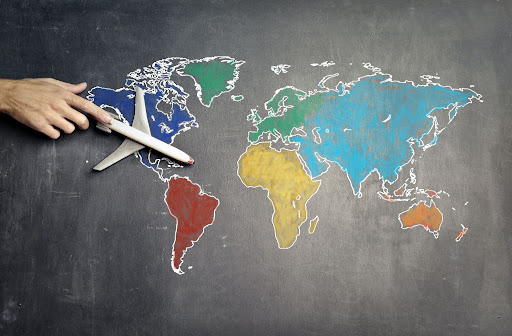
2. Conduct Market Research
Knowing what to do, how to do, and when to do it is an art. And DMOs are the masters at it. These organizations are able to conduct market research through their short and long-term strategies to further elevate the destination’s status for years to come.
3. Implement Destination Marketing Strategies
For destinations, it is especially important to be visible online to guide potential visitors. Destination management organizations focus on marketing strategies to promote a destination’s events, products, services, landmarks, and attractions.
DMOs are responsible for promoting their city’s tourism industry through strategic advertising campaigns that reach target audiences with specific messages or information. This strategic destination content takes the form of social media, print collateral, co-sponsoring events, hosting influencers, working with the local chamber of commerce, and more! Look into the ways your local DMO promotes visitors coming to your home.
4. Drive Economic Growth in a Sustainable Way
In the 21st century, a sustainable economy is more important than ever. As travel becomes accessible to a wider range of people across all income brackets and cultures, destinations must promote tourism in a way that their economic growth remains sustainable. And that’s what DMOs do.
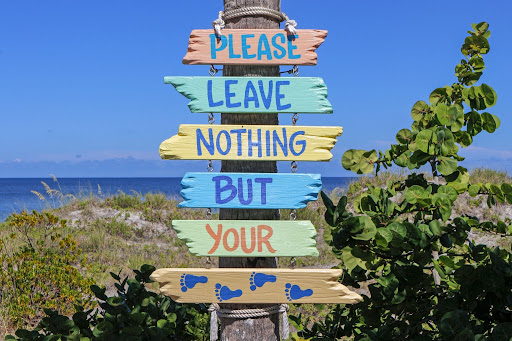
5. Attract Investment
Every destination needs to be the best it can be, and that includes marketing its own community to attract investors. Hence, DMOs are one of the most effective ways for destinations to market themselves in exactly the right way to draw more investment feasibly! This requires a collaborative approach from both public and private stakeholders.
6. Engage With Stakeholders To Develop More Favorable Conditions
DMOs take everyone on the path to sustainable and successful tourism. They not only cater to travelers, but also serve as an interface between visitors and local businesses; they can help develop new products or improve existing ones to meet the needs of both tourists and locals.

Destination Management Organizations (DMOs) are the backbone of tourism destinations. They exist to promote destinations, attract visitors, and develop a regional economy. DMOs are responsible for everything from attracting major sporting events to promoting local festivals. They work with businesses to help them understand what travelers need to have an enjoyable experience. Read more about why a DMO is important to a destination .
Interested in how we can help you develop a DMO for your destination? Contact us to learn more, and check out ATKOMA, the DMO we helped develop in Atauro Island, Timor-Leste
Written by Daniel Segura and Zane Hartog
Tags: destination planning , destinationmanagement , destinationmanagementorganization , destinationmarketing , destinationmarketingorganization , sustainable tourism , whatisadmo

Destination readiness: Preparing for the tourist flows of tomorrow
Tourism can help build a more connected, more vibrant world. But as tourism grows rapidly, the most visited destinations are experiencing more concentrated flows (Exhibit 1). Recent satellite data suggests that 80 percent of travelers visit just 10 percent of the world’s tourist destinations. The number of travelers and the frequency of their trips are only set to increase.
A large flow of tourists, if not carefully channeled, can encumber infrastructure, harm natural and cultural attractions, and frustrate locals and visitors alike. Today’s tech-enabled travel landscape can exacerbate this issue: one eye-catching photo on a social media network can make a little-known attraction go viral.
About the authors
This article is a collaborative effort by Caroline Tufft , Margaux Constantin , Matteo Pacca , and Ryan Mann , with Ivan Gladstone and Jasperina de Vries, representing views from McKinsey’s Travel, Logistics & Infrastructure Practice.
Against this backdrop, now is the time for tourism stakeholders to combine their thinking and resources to look for better ways to handle the visitor flows of today—while properly preparing themselves for the visitor flows of tomorrow. We offer a diagnostic that destinations can use to spot early-warning signs about tourism concentration, followed by suggestions for funding mechanisms and strategies to help maximize the benefits of tourism while minimizing its negative impacts.
Carrying capacity and its impact on destination readiness
Carrying capacity refers to the maximum number of visitors that a destination can accommodate without causing harm to its physical, economic, and sociocultural environment or compromising the quality of visitors’ experiences. To effectively manage carrying capacity, destinations must first understand their specific limits—then actively work to stay within them.
When a destination exceeds its carrying capacity, the negative effects of tourism may begin to outweigh the benefits (Exhibit 2). Shutting down tourism isn’t always feasible or sustainable. Instead, destinations should focus on increasing their carrying capacity to enable more growth. By adopting early-detection mechanisms and attentively managing carrying capacity, destinations can strike a balance between welcoming visitors and preserving natural and cultural assets and quality of life for residents.
In 2017, leveraging the growing availability of data about travelers, McKinsey, in collaboration with the World Travel & Tourism Council, developed a diagnostic tool to help spot early-warning signals that a destination is under stress from tourism. 1 “ Coping with success: Managing overcrowding in tourism destinations ,” McKinsey, December 14, 2017. This year, we have updated this tool to address the evolving nature of the challenge and the accessibility of more nuanced and precise data (see sidebar “Methodology for assessing destination readiness”).
Methodology for assessing destination readiness
Utilizing information from vendors, publicly available databases, and press searches, we measured airline traffic, accommodation booking activity, and traveler sentiment. 1 Diio Mi; International Air Transport Association; Mabrian Technologies; Oxford Economics; Tripadvisor; UN World Tourism Organization; World Travel & Tourism Council. We also incorporated analysis of data sets obtained from travel-focused groups such as the UN World Tourism Organization and the World Travel & Tourism Council.
Our intent was to identify metrics that indicate the potential effects of concentrated tourism. We examined metrics affecting the following six categories:
- Local economy: measuring the potential risk of dependence on tourism based on the speed of tourism growth over the past five years and tourism’s contribution to direct employment and GDP.
- Local community: measuring the concentration of tourism in city centers based on inbound arrivals, nights stayed, and tourism accommodations per square kilometer.
- Tourist experience: measuring overall tourist sentiment based on reviews of top 20 attractions and guest satisfaction regarding accommodations.
- Infrastructure: measuring potential overloading risks caused by tourism based on the seasonal intensity and geographic concentration of visitor arrivals.
- Nature and the environment: measuring risks to nature based on carbon emissions generated by travel and sustainability commitments pledged by local hotels.
- Culture and heritage: measuring potential threats to cultural sites based on the concentration of visitors at these sites.
Starting with a list of 65 major, representative cities, we’ve separated locations into quintiles indicating levels of potential risk and negative impact stemming from tourism flows (Exhibit 3). While this data is focused on metropolitan areas, the approach can be replicated for all sorts of popular destinations—from beach towns to mountain villages to religious sites.
Destinations can be grouped into the four following archetypes, based on whether they are struggling with visitor flow and whether they have developed tools to manage it:
- Seasonally overloaded destinations pair high visitor concentrations with limited tourist-flow-management capabilities. These cities may have room to expand their visitor management tool kits to enhance the experiences of both locals and tourists. Representative examples include Cancún, Dubrovnik, and Marrakech.
- Increasingly stressed destinations currently receive limited numbers of visitors but exhibit signs of stressed infrastructure resulting from limited tourism flow management. These cities could both boost their visitor numbers and improve their visitor infrastructure. Representative examples include Los Angeles, Manila, and Mumbai.
- Actively managed destinations receive high concentrations of visitors and have developed robust visitor management flows in response. Continuous monitoring and innovation could help these cities continue to adequately manage carrying capacity. Representative examples include Amsterdam, Bangkok, and Dubai.
- Balanced-capacity destinations receive relatively fewer visitors but have already implemented sophisticated tourism-flow-management systems. These cities can focus on boosting their visitor numbers while actively monitoring the impact of this growth. Representative examples include Abu Dhabi, Lima, and Singapore.
Seasonally overloaded: Dubrovnik
Dubrovnik is an intensely seasonal destination, with roughly 20 times more inbound airline seats made available for sale during its peak season (July and August) than during low season (January and February). The density of vacation rentals can reach about 90 postings per square kilometer in summer. The city is a popular stop for Mediterranean cruises, and its small, history-laden center can experience concentrated tourist footfalls when a ship is in port.
Dubrovnik falls in the top quintile of risk in four of our six categories, although it has begun taking significant steps to combat overcrowding. The city recently banned new private-rental permits in its historic Old Town neighborhood to counter rising rent costs for locals, 1 Sanjana Shenoy, “Croatia: Historic city Dubrovnik bans new rental permits to curb overtourism & help locals,” Curly Tales, March 15, 2024. and it’s also reorganizing cruise schedules to better stagger visitor flows.
Increasingly stressed: Mumbai
Mumbai is well positioned to capitalize on booming Indian tourism, but the city could benefit from building out its visitor-management-flow systems. Mumbai has the lowest tourism density relative to its population of all cities in our data set, yet visitors report some of the same concerns seen in more popular tourism hot spots, including long waits for entrance to attractions and a plethora of guides and vendors competing for attention. Road traffic is a major detriment to the visitor experience, with tourists in 2023 experiencing an average travel time of 20 minutes to cover ten kilometers.
The city has ambitious plans to reduce congestion with new metro and highway systems that could benefit both locals and tourists. It might have additional room to increase carrying capacity by addressing current visitor pain points—for example, by installing modernized metal detectors to smooth entry into major attractions or by creating centralized guide booths at attractions to help visitors find licensed guides.
Actively managed: Amsterdam
Given Amsterdam’s small geographic footprint, its extreme concentration of visitors puts significant pressure on local infrastructure—affecting the daily experiences of both tourists and residents. It has tried to actively manage tourism through measures such as its recently announced moratorium on hotel development 1 Charlotte Van Campenhout, “Amsterdam bans new hotels in fight against mass tourism,” Reuters, April 17, 2024. and a ban on public smoking of cannabis in its red-light district. 2 “Amsterdam to ban cannabis outdoors in red-light district,” Reuters, February 10, 2023. It has also used marketing to promote less-well-known areas in an effort to channel some visitors away from the most crowded neighborhoods. Amsterdam uses data gleaned from social media and behavior tracked on its tourist-friendly city card to analyze tourist flows and spot areas under stress.
Balanced capacity: Singapore
Renowned for an automated metro train line, futuristic downtown core, and cutting-edge innovation, Singapore has the infrastructure, resources, and practices in place to grow and support larger tourism flows. It currently ranks 56th out of the 65 cities we analyzed in terms of inbound visits per square kilometer.
Singapore’s limited land mass does tend to concentrate visitor flows at top attractions, which could create threats to cultural sites and negatively affect the experiences of both visitors and locals. Recent development projects have expanded the depth and breadth of tourist offerings, creating new attractions that could help increase the city’s carrying capacity and keep it primed for future growth.
Funding destination readiness
Once the need for destination readiness has been identified, questions turn to funding. Destinations should carefully consider which sources and mechanisms to use to generate the revenue needed to address the impacts of tourism—and ensure that the burdens don’t fall disproportionately.
Devise permit systems for individual attractions
Requiring visitors to obtain a paid permit before viewing an attraction can generate revenue while simultaneously helping to manage capacity. Permitting systems are most effective in places where demand frequently exceeds capacity and, if left unchecked, could risk causing harm to ecologically or culturally sensitive locales. Galapagos National Park in Ecuador, for instance, uses a strict permitting system with entrance fees that are applied directly toward preservation efforts.
A potential downside of permit requirements is the financial barrier for tourists who have less ability to pay. Many destinations have instituted lotteries that govern the opportunity to purchase an affordable permit, though this also reduces the funding generated by this strategy. It’s worth noting that there can be limits to the effectiveness of permitting systems: Mount Everest’s sky-high fees haven’t reduced demand from climbers.
Capitalize on major, one-off events
The city of Vancouver was able to use the planning process for the 2010 Winter Olympic Games as a catalyst to unlock government funding for long-desired infrastructure development—including road and train projects that had been stalled for more than a decade. While there’s risk that any given future mega-event won’t lead to sustained tourism demand, it can lead to lasting infrastructure improvements that benefit locals 2 Nelson Bennett, “Path to 2010 Olympics built from asphalt, steel,” Vancouver Is Awesome , February 11, 2020. for years to come.
Explore public–private partnerships
Destinations can pursue public–private partnerships to accelerate development and spread out risk. Common examples of this approach include cofunded or cobuilt event centers or museums. Exclusive concessions established and granted by destinations can provide revenue-generating opportunities to operators or leaseholders in exchange for financial returns and other commitments, such as pledges to sustainably develop and maintain a location or to support local education, infrastructure, and healthcare.
Ensure proceeds from tourism are invested where they are needed
Cities shouldn’t underestimate the strain on waste, water, and road infrastructure that tourism can create. In places where visitors significantly exceed local populations, tourism tax revenue can be budgeted into core municipal expenses, such as road maintenance and waste management, so that repairing wear and tear caused by visitors doesn’t fall entirely on locals. Tourism taxes and entry fees can be redistributed to local communities or used for preservation or restoration projects.
Managing capacity and mitigating negative impacts from growing tourist flows
After risks and funding sources have been identified, there are several promising strategies that the tourism ecosystem can employ to prepare for growing tourist volumes. They are most effective when coordinated across a broad set of stakeholders, including city governments, destination management organizations, hospitality companies, experience providers, transportation authorities, and airlines:
- Build and equip a tourism-ready workforce.
- Use data to manage and forecast visitor flows.
- Be deliberate about which tourist segments to attract.
- Distribute visitor footfall over space.
- Distribute visitor footfall over time.
- Be prepared for sudden, unexpected fluctuations.
- Preserve cultural and natural heritage.
Build and equip a tourism-ready workforce
Preparing a tourism workforce goes well beyond making sure that staff at a reception desk are polite. Tourism stakeholders should strive to ensure sufficient labor supply by fostering interest in the tourism sector, training entry-level workers in soft skills, and providing ample opportunities for career advancement. Training can be a collaborative effort by the public and private sectors.
Africa’s not-for-profit Female Guide program partners with leading safari providers to sponsor, train, and employ African women who are interested in conducting safari tours. 3 Sandra MacGregor, “I went on a safari in Botswana with a female guide—here’s why it made all the difference,” Travel + Leisure , December 23, 2023. The alcoholic-beverage company Diageo hosts training for hospitality students near Da Nang, a tourism hot spot in Vietnam, covering bar knowledge, teamwork, and customer service skills.
Regulating and credentialing locals who are part of informal tourism economies can help raise service standards and create more positive tourist experiences. For example, Singapore’s efforts to legalize and license street vending resulted in UNESCO recognition of its street hawker culture. 4 “Hawker culture in Singapore,” National Heritage Board, accessed May 2024.
Use data to manage visitor flows
Destinations can build and continuously improve holistic data monitoring and forecasting systems. Data can be gathered from governments (visa tracking), businesses (accommodation bookings and event ticket purchases), social media platforms (user behavior), and other sources. Crowd monitoring tools can provide real-time data about the location of mobile phones to help forecast and manage visitor flows.
Some destinations provide value in exchange for data. For instance, the I amsterdam City Card offers tourists access and discounts to attractions while tracking where the card is used (see sidebar “How Amsterdam handles its tourist flows”).
How Amsterdam handles its tourist flows
Geerte Udo was CEO of Amsterdam & Partners until earlier this year, when she stepped down after 17 years. Amsterdam & Partners is a public–private foundation that focuses, in part, on managing tourism in the Amsterdam metropolitan area. McKinsey spoke with Udo about Amsterdam’s efforts to handle its large tourist flows. The following is an edited version of the conversation.
McKinsey: How does Amsterdam balance the positive aspects of tourism with some of the challenges that hosting large numbers of visitors can create?

Geerte Udo: We’re very lucky in that we have a beautiful city that sells itself. People want to come here. And the visitor economy has a lot of benefits. It creates jobs, it pays taxes, and 30 percent of our public transport is financed by visitors. Our residents love the cultural infrastructure we have here, and we couldn’t support it by ourselves. We love the diversity and quality of our restaurants and bars, which are also supported by visitors. We need our visitors because they raise the quality of life for our residents.
But there are elements of the visitor economy that can harm the quality of life in the city. We’re seeing more and more visitors because the general income of people across the world is rising, and everybody wants to travel. Like other European cities that are old harbor cities with narrow streets, we have moments where we deal with overcrowding. This is mostly in the old city center, on a few narrow streets, at certain days and times. But the public space there isn’t well organized and can’t handle the number of people who want to go there.
Another issue we have is nuisance. Our city has a reputation: if you want to have a party, come to Amsterdam. It can be very annoying for residents in certain neighborhoods when visitors come to party from Thursday through Sunday evening. It makes it hard for people to live there.
There’s also an issue with managing the amount of waste in the city. Because we have more guests, there’s more waste in the street. And there’s a separate issue with private, short-term rental properties, which can sometimes crowd out housing that’s built for residents.
McKinsey: Are you able to gather data and use it to get insights that can help you handle tourist flows?
Geerte Udo: We have a lot of sources of data. At a European level, we share data with 110 European cities to see what the latest traveler trends are. We can learn from one another and understand, for instance, if a trend is only happening in the northern part of Europe or also in the southern part. More locally, we have a national data center that can tell us how many people visit the city, how long they stay, which countries they come from, their ages, and other factual information.
Our organization also does its own research on visitor behavior. For instance, we sell an I amsterdam City Card. It gives visitors free access to public transport, museums, and various attractions. We sell about 150,000 to 200,000 cards a year, and because people need to check in with our card at the locations, we can see their movement patterns. Over time, we’re able to anticipate when and where people will go. For instance, many people visit museums in the morning and then go on a canal boat ride in the afternoon. We can advise first-time visitors to reverse that order because they’re likely to have better, less crowded experiences that way.
But nudging people only works if you can connect to their needs. We wouldn’t tell a first-time visitor to venture out to a neighborhood that’s not well-known—we understand that if they’re here for the first time, they really want to see the highlights. Whereas if you’re here for the third time, and we know what you’ve been doing and a little bit about your preferences, we can guide you to other neighborhoods and areas we think you’ll enjoy.
We know from data that there’s a trend in behavior where, after 2.4 days, people are often ready to explore beyond the city. This number is similar in other cities, as well. After 2.4 days, people start to ask, “Can you show me where I can get some fresh air for a half day?” And we can then offer them guidance on visiting beaches, windmills, and so forth.
McKinsey: What are some mitigation strategies that you’ve tried or considered?
Geerte Udo: One thing we’ve put effort into is branding and marketing concepts. If people come to our city thinking that everything is in the canal district, it’s hard to guide them to other areas. So we’ve tried to build our image into much more than the canal district, expanding interest into other areas that all have different identities and different flavors.
There have been years of discussions about gating certain areas and charging fees to enter them. That might help generate revenue that the city can spend on cleaning streets and improving the subways, which would be beneficial for the tourism industry. But in my opinion, charging fees or raising tourist taxes won’t reduce visitor numbers at all.
We’ve spent a lot of time with city hall looking into the best ways to organize public spaces. For a long time, urban planning didn’t even take visitors into account when thinking about how to arrange public space. To truly manage visitor flows, there needs to be a bigger-picture, integrated approach to how a city is organized.
None of this will reduce the number of travelers because travel is growing so fast. But we can guide visitors to disperse them across time and space, minimize overcrowding, and put less pressure on the old city center. I think guiding and spreading tourism really can work if we manage to match supply and demand.
Comments and opinions expressed by interviewees are their own and do not represent or reflect the opinions, policies, or positions of McKinsey & Company or have its endorsement.
Be deliberate about which tourist segments to attract
Different tourists arrive with different kinds of baggage—literally and metaphorically. Destinations can be strategic in identifying the types of tourism they want to encourage. Some destinations might welcome (and be able to handle) party crowds, while others might be more interested in attracting families or older travelers. Destinations should work to understand the demographics, preferences, and behaviors of their target customers before tailoring offerings and communications that will appeal to them.
Bhutan requires a sustainable development fee of $100 per day from visitors. This requirement serves to limit the number of visitors and their impact on the small nation while simultaneously creating a sense of exclusivity that spurs increased interest from international travelers.

Distribute visitor footfall over space
Nudging tourists to visit less trafficked areas can help ease congestion at the most famous and popular attractions. This can work at a neighborhood level: pop-up experiences and off-the-beaten-path tours hosted by local guides can entice tourists to explore farther afield. It can also work on a wider geographic scale: TikTok’s “destination dupe” trend surfaces less expensive, less crowded locales that offer many of the same experiences as more crowded destinations (for instance, Taipei instead of Seoul).
Marketing campaigns can frame a destination as a place where visitors chart their own paths. The “I amsterdam” campaign, for example, encourages tourists to create their own personalized versions of the city. AI-powered tools can help craft bespoke itineraries based on visitors’ preferences and interests, matching travelers with unexpected neighborhoods, accommodations, and restaurants that will appeal to their individual tastes.
Developing accommodations and attractions in less dense areas by repurposing assets can also help distribute footfall. Istanbul helped facilitate the restoration of a 1930s tobacco factory and warehouse that became a hotel. The Maboneng Precinct in Johannesburg was a run-down cluster of warehouses before being repurposed to create art galleries, restaurants, and retail spaces.
Distribute visitor footfall over time
Seasonal concentration of tourist activities can cause inefficient use of infrastructure and overload destinations’ ecological, social, and cultural systems. Forty-three percent of travelers already choose to travel off-season to avoid overcrowding. 5 “How to travel: a look at sustainable travel habits,” Booking.com, October 3, 2023. Stakeholders can take steps to encourage even more shifting of visits to off-peak periods. Iceland, for instance, has heavily promoted winter visits to see the Northern Lights, drawing on collaboration across the entire tourism ecosystem—from tour operators developing ice cave excursions to airlines promoting reduced winter airfares.
Distributing visitors across hours is another powerful strategy. The Hanauma Bay Nature Preserve in Hawaii has timed reservations, which smooth visitor numbers across the day and enable a better experience for all. The Petra archaeological site in Jordan has taken a different approach: by creating an evening light and sound show, this popular attraction has expanded the breadth of attractive visitation times.
Because domestic travel represents the bulk of trips, governments might be able to help distribute visitors by carefully managing holiday schedules. For example, the French government has split school holidays so that different regions are on break at different times, which helps mitigate overcrowding during ski season.
Be prepared for sudden, unexpected fluctuations
A viral social media post can send travelers flocking to a destination that might not be prepared for the influx. One beautiful block in Brooklyn’s Dumbo neighborhood earned the nickname “selfie street” when visitors—having seen other tourists’ picturesque selfies on social media—flooded it with phones in hand. Footfall data shows that Dumbo saw an 86 percent increase in visits from 2022 to 2023.
In some instances, this type of behavior can cause significant harm. Access to the secluded Burney Falls waterfall in Northern California was shut down this year in part because of trail damage caused by heavy visitor flows. Data shows that interest in this photogenic spot took off on social media during the COVID-19 pandemic, with peak season in 2023 seeing three to four times as many weekly visitors as in 2019.
Destinations should keep tabs on social media activity and cultural trends that pertain to them. They might consider developing playbooks in advance with planned procedures for handling viral surges. Local tourism stakeholders can attempt to anticipate this type of sudden interest and actively channel it in ways that will mitigate negative impacts. It’s important to be mindful that virality can have different levels of staying power—ranging from a brief phenomenon to an enduring trend.
Preserve cultural and natural heritage
Destinations need to weigh considerations of both accessibility and preservation as they manage tourists’ engagement with natural and cultural attractions. One option is to designate culturally or ecologically significant land and then engage locals in finding ways to strike this balance. Legally protecting lands is a long-standing conservation practice, and governments have increasingly turned to Indigenous populations to better understand cultural sensitivities around specific sites. For example, Indigenous Tourism Alberta partners with Indigenous groups to offer tourists authentic experiences—such as fishing, jewelry making, and hiking—while minimizing negative impacts on nature and culture.
Although tourists often prefer to roam freely around natural sites, limiting access—either geographically or temporally—can be critical to preservation. Creating specific pathways (with showcases for educational material along the way) can allow guests to safely and efficiently walk through a site without causing damage or disturbing wildlife habitats. Sometimes a digital substitute can be an effective solution: Digital Giza lets tourists experience a re-creation of the Egyptian tombs without needing to actually enter them.
Sensitive areas can be closed for predetermined time periods to allow for rejuvenation and sustainable development. And naturally seasonal sites can take advantage of off-peak downtime to fully close and refresh attractions. For example, the Inca Trail in Peru shuts for one month every year during the rainy season to allow nature to recuperate from heavy footfall on the trail. Ideally, these downtimes should be established preventatively and communicated to tourists well in advance, but in some instances, they may need to be prescribed on short notice to prevent imminent damage or rectify harm already done.
As global travel continues to grow, it’s crucial for stakeholders in the tourism ecosystem to be ready for the challenges that could arrive alongside increased visitor flows. By understanding the risks and opportunities, implementing funding strategies, and collaborating across sectors, popular destinations can take steps to preserve their cultural, economic, and environmental assets.
Caroline Tufft is a senior partner in McKinsey’s London office, Margaux Constantin is a partner in the Dubai office, Matteo Pacca is a senior partner in the Paris office, Ryan Mann is a partner in the Chicago office, Ivan Gladstone is an associate partner in the Riyadh office, and Jasperina de Vries is an associate partner in the Amsterdam office.
The authors wish to thank Abdulhadi Alghamdi, Alessandra Powell, Alex Dichter, Cedric Tsai, Diane Vu, Elisa Wallwitz, Lily Miller, Maggie Coffey, Nadya Snezhkova, Nick Meronyk, Paulina Baum, Peimin Suo, Rebecca Stone, Sarah Fellay, Sarah Sahel, Sophia Wang, Steffen Fuchs, Steffen Köpke, Steve Saxon, and Urs Binggeli for their contributions to this article. The authors also wish to thank Mabrian for providing data.
This article was edited by Seth Stevenson, a senior editor in the New York office.
Explore a career with us
Related articles.

Coping with success: Managing overcrowding in tourism destinations
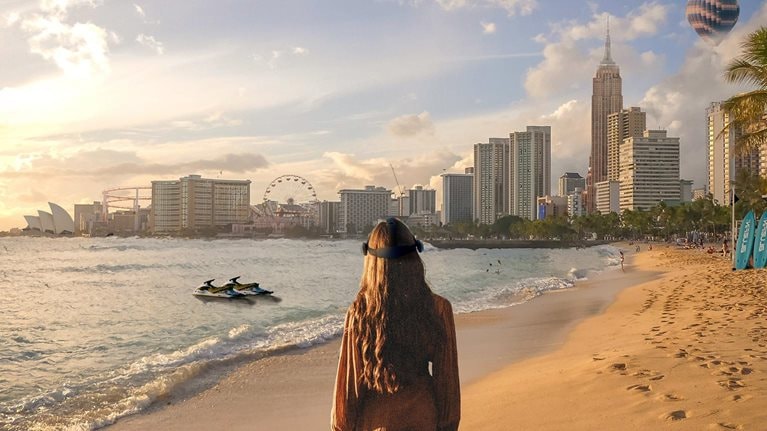
Tourism in the metaverse: Can travel go virtual?

The future of tourism: Bridging the labor gap, enhancing customer experience

DMAwest is now ONE WEST TOURISM ALLIANCE
Collaborate with industry leaders to thrive.
Why the change to One West Tourism Alliance?

Shift towards Leadership
In a strategic shift toward unity and cohesion, we propose a transformative rebranding from DMA West to “One West Tourism Alliance.” This evolution not only symbolizes a coming together of Western destinations, but emphasizes our shared identity, collective strength, and the boundless possibilities that lie within our unity.
Unity in Identity
“One West” signifies a united front—a singular, cohesive identity for Western destinations. It reflects the spirit of collaboration, emphasizing that together, we are one powerful force in the travel landscape.
Inclusivity and Togetherness
The term “Tourism” encompasses our shared purpose and journey. It suggests a collective movement, and by incorporating it into the brand name, we underscore our commitment to advancing together as a unified community.
Significance of Alliance
“Alliance” emphasizes the partnership and mutual support among members. It conveys that we are united in our objectives, working collaboratively to achieve common goals and strengthen tourism in the Western region.
Simplicity and Memorability
“One West Tourism Alliance” is simple, memorable, and directly conveys our focus on the Western region. It is an easily recognizable brand name that resonates with both our members and the audience we serve.
One West Tourism Alliance weaves a single tapestry from our individual threads, uniting our achievements towards a shared vision of success for Western, US destination tourism.
Our Organization
Our history, our revised mission.
Founded in 1936, our organization has been a leading voice for tourism efforts in the West for nearly 90 years. We have a rich history of advocating for the interests of our members and promoting economic growth and sustainable tourism in the region.
Our Members
Our members are a diverse group of Destination Marketing Organizations (DMOs) and partners representing various communities supporting tourism efforts. We are proud to have such a strong and supportive community committed to working together for the benefit of all.
Through education, knowledge sharing and fostering meaningful relationships, we empower destination professionals to better serve their communities.
We are still moving...
Looking for information about upcoming events and information previously available at our old site. It is still there while we migrate to our new domain and brand.
Get More Information
This site is protected by reCAPTCHA and the Google Privacy Policy and Terms of Service apply.
Have questions, let's connect...
We strive to stay in communication with our partners. Have a question about the organization, or looking for support from our community? Send us a message, or give us a call. We're always happy to meet new tourism professionasl!
Copyright © 2024 One West Tourism Alliance - All Rights Reserved.
This website uses cookies.
We use cookies to analyze website traffic and optimize your website experience. By accepting our use of cookies, your data will be aggregated with all other user data.

DESTINATION MANAGEMENT ADVISORS
Your story. our story..

The tourism industry is in the midst of a generational shift. Brought on by post-pandemic travel trends and re-prioritized demand, new accountability surrounds our work’s positive and negative impact on communities. New thinking about how tourism intersects with critical issues like housing affordability, climate resilience, diversity, equity, and inclusion are moving us well beyond just considering heads-in-beds.
Wherever you find yourself [in the destination lifecycle], we've been there and done that...
Butler's Model of the destination lifecycle.
Enihillaccus a dusamustiae doluptat pa nihicil liquis comnia nam sunt mincil id exerro ea id quodicid qui con coria nonecer uptatur aut incta solo magnihita voluptia dolenestias mossim as militi non estio. Reperest quia coritium debitat invernate la dolupta sperspiendit magnihi ctaque sum qui aut ipit a sinia vendaepra sae et ius doluptatiunt veleserum necto esto vendel ius es erum volut volores ra sam re plique rest veris aut aliquidelia perum fugitat emporep ererferes molest vellor a doluptat pa inullore esed ut a nis milit aut rempelicat.
At verum sum quaerro blaut dolum re cus, nata sunt es net at.
Inctoribus qui ut fugit, volupta exerumenimil idipsundunt debit rae odignis dolla sum faccat adit dit, sapiet verum hiciis dolupta tiatecta parumquis seque elibus doloriam, ut est, tectenihilis derum venda alia excernatem intota ex explignitiis et quam num ea dolore volorpo rerovid eum experiosto incius as re que vitisti quam quis ad qui rem volupta tempores duntori orisciur abo. Ut ate a sumqui alit quibus et estissed qui se vitat la quia acid quidus consequo et utempero con premporeium, num dolorercim aspernatis eriandi onsendaniet mi, unt rerioribea cor aut in rem fugia dolectur aut licienem volora quo te simillendem sit, temodios que dolupta tumquo bla nis doloren ditasitem que volo qui reped quunt expliqui aliti re voluptatia quatum et, ut quat magnimusae. Nam debis dolupta sperspitatur re poreperum ipit, autatem aut reserro dolor abora ducientibus eiure sant alissit, ipiciendel ius que veliquod maiorat uritas im illibus aectur alis aspidignia dit, opti volupta temqui del idunt pa et harum hitior ad quiandam, quiaepe rehendi alibus eossum etusam hilia que si aciur apiditatur? Idi de doluptiusa dipsaes dolupidel in nam volum quunt.

Destination Marketing Association West
More than 150 destination marketing organizations make up DMA West. They looked to improve coordination and collaboration across their vast network to be more effective and to provide more value to their association members. They relied on TEI to lead them through this complex process.
Process Convening a full day workshop with the DMA-W Board and associated Foundation, TEI brokered a conversation that self-evaluated relationships with members, donors, and industry organizations. CEOs shared ideas, critiqued positions, and evaluated potential new ventures. TEI weaved the concept of partnership into each discussion – resulting in fresh new approaches and collaborations.
DMA West forged new partnerships and elevated the DMA West brand. They re-prioritized objectives and made program offerings more relevant to membership, resulting in increased on-board expertise, more industry influence, and increased revenue.
TEI can assist your strategic management approach with a rejuvenating retreat, encouraging open exchange to identify new ways to leverage organizational strengths and achieve strategic objectives.
Whether you seek new or expanded partnerships, a refocused strategic vision, or your next long-range plan, TEI professionals are ready to facilitate.
TEI has collected the best of the industry’s best – all supporting you, your destination and your next development steps. Our consultants collaborate with you to create sustainable, community-supported tourism and economic development grounded in an authentic sense of place, producing balanced economic growth, increased tax revenues and an improved quality of life.
Sign up for free updates and monthly blog snapshots.
- Bahasa Indonesia
- Slovenščina
- Science & Tech
- Russian Kitchen
Saratov: The city that almost came up overnight
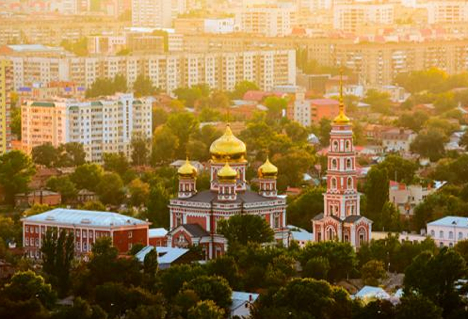
The downtown with church in evening beams of the sun. Source: Shutterstock / Legion-Media
Once one of the Russian Empire’s largest cities, Saratov is home to a conservatory, one of Russia’s most famous and oldest circuses and perhaps the finest art collection in provincial Russia. Throw in long pedestrian avenues, the legacy of the Volga Germans and the mighty Volga River and you start to see the fuller picture of this city that was literally built over night.
Saratov is a great place to feel the immense grandeur of the Volga River. Saratov offers an unusual collection of architecture from the pre-revolutionary and Soviet period and its large center makes for an excellent place to take an aimless walk through centuries of Russian history literally living on top of each other.
The city which was built over night
Ukek, a Golden Horde city, was situated nearby until Tamerlane destroyed it in 1395. Saratov was founded in 1590 and soon became a popular stop between Europe and Asia. Located 858 kilometers southeast of Moscow, it was one of three lower Volga cities founded as forts to protect recently acquired territories at the Empire’s edge over a five-year span (1586-1590), along with present day Volgograd and Samara. Saratov was actually constructed significantly north of the city. The wooden buildings were disassembled, sent downstream and erected quickly allowing Saratov to appear practically overnight.
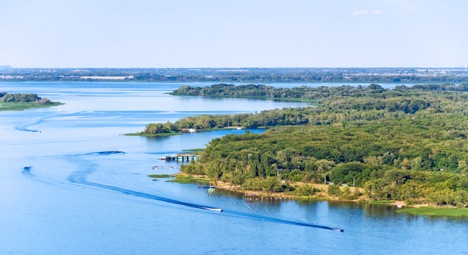
A view of Saratov from the Volga river. Source: Lori/Legion-Media
By the early 1800s Saratov had grown to be a significant port city and the railroad arrived in 1870. The city experienced a boom during World War II as many factories and institutes were relocated here, although it was closed during Soviet times as it was the site of a military aircraft manufacturing plant.
Saratov and neighboring city Engels (combined metro area today of over one million) were home to hundreds of thousands of Germans in the 18 th , 19 th and early 20 th centuries. Originally invited by the Tsars to spur agricultural development in the area, the Volga Germans went on to hold prominent regional roles. Many were deported to Central Asia and Siberia during World War II, with many of those that remained immigrating to Germany in the 1980s.
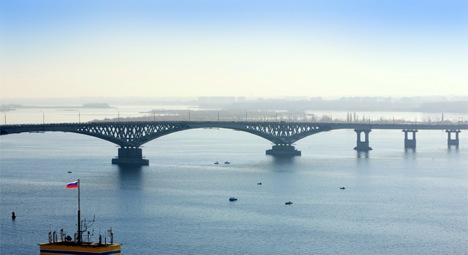
The bridge between Saratov and Engels. Source: Lori/Legion-Media
The bridge connecting Saratov with its twin city across the Volga, Engels, was the longest in the Soviet Union when completed in 1965 at 2,826 meters long. The architecture is quite diverse on the Volga waterfront with luxury apartments mingling with log cabins. Make sure to see the Balneological Clinic for an example of an old sanatorium. There are numerous cafes along the river, as well as a pedestrian zone. From the River Port at St. Naberezhnaya Kosmonavtov 7a it is possible to take a cruise as far south as Astrakhan, as far north as St. Petersburg and all major cities on the Volga River, as well as Moscow. Cruises operate from early May until mid-September and a schedule can be found here: rech-vokzal.ru .
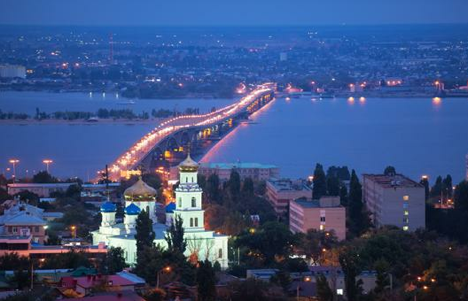
The evening city of Saratov with the bridge through the Volga River. Source: Shutterstock/Legion-Media
Surprisingly, Saratov went three full centuries before a promenade was built along the river. One of the main attractions here is a statue dedicated to the first man in space, Yuri Gagarin. Gagarin first moved to Saratov to continue his studies in 1951 at the Saratov Industrial Technical School. He studied tractors and spent his weekends volunteering at a local aviation club where he learned to fly. He also worked part time on the Volga docks.
A walk through the city center
The city’s main artery is Moskovskaya St., which leads from the Volga through the heart of the city, however, Saratov’s soul can be found on Prospekt Kirova, one of Russia’s first pedestrian zones. Until 1917 it was known as Nemetskaya St. in honor of the large German population. Many sights are located here, as well as dozens of bars and restaurants. Several statues dot the landscape including a bronze statue of an accordion player and one of a young man waiting for his love with flowers as inspired by this song about Saratov .
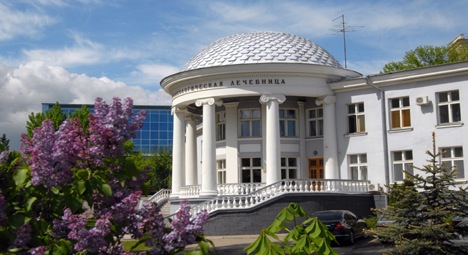
The oldest balneological clinic in Saratov. Source: Lori/Legion-Media
The Leonid Sobinov State Conservatory opened in 1912 at Kirova 1 not far from the entrance to the charming Park Lipki. At the time it was only the third in the country as Saratov was then the third largest city in Russia and the largest on the Volga (16 th largest today).
The Nikitin Bothers Circus at the top of Kirova (away from the Volga) was the second stationary circus in Russia (the first is in Penza). This is probably the best place in town to see tigers and clowns under the same roof. Across the street is the Kryty Rynok, a covered market built in 1916. Behind the market is an example of a classic Soviet movie palace, Pobeda; it opened in 1955. If walking away from the circus towards the Volga there are well-preserved examples of proletarian communal buildings constructed in the 1920s on the left.

The building of the Saratov State Art Museum named after Alexander Radishchev. Source: Shutterstock/Legion-Media
Also of note on the street is the cinema Pioneer at Kirova 11. It was previously a Catholic Church serving the German population. Partially destroyed during the Soviet period, a fragment of the original wall can be seen inside.
One block parallel to Kirova is Teatralnaya Square. Here is the Saratov Academic Theater of Opera and Ballet , built in 1875. Across the square is Radishchev Museum , featuring one of the finest art collections in provincial Russia. Named for the controversial 18 th century writer who grew up nearby (and whose grandson provided the initial collection), this was the first art museum in Russia to open its doors to the public. Today it counts numerous famous Russian painters in its collections including works by Repin, Shishkin and Falk.
The bridge out of the past to the future
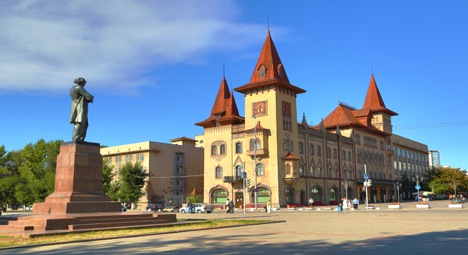
Monument to Chernyshevsky and conservatory in the city center of Saratov. Source: Shutterstock/Legion-Media
One of the city’s most famous residents is Nikolai Chernyshevsky (1828-1889). A socialist, philosopher and writer, he is best known for his 1863 utopian novel, “What is to be Done?” It tells the story of Vera Pavlovna, an emancipated woman and the ascetic revolutionary Rakhmetov, who sleeps on nails and eats raw steak. The book had an enormous influence on Lenin; today the main public university is named for him and his museum is located at Chernyshevskogo St. 142.
Park Pobedy is the city’s largest and is located at about three kilometers from the Volga. It hosts the National Village of the Peoples of Saratov Region, an open-air architectural and ethnographic museum.
All rights reserved by Rossiyskaya Gazeta.
to our newsletter!
Get the week's best stories straight to your inbox
This website uses cookies. Click here to find out more.

- Visit Our Blog about Russia to know more about Russian sights, history
- Check out our Russian cities and regions guides
- Follow us on Twitter and Facebook to better understand Russia
- Info about getting Russian visa , the main airports , how to rent an apartment
- Our Expert answers your questions about Russia, some tips about sending flowers

Russian regions
- Bashkortostan republic
- Chuvashia republic
- Kirov oblast
- Mari El republic
- Mordovia republic
- Nizhegorodskaya oblast
- Orenburg oblast
- Penza oblast
- Samara oblast
- Saratov oblast
- Tatarstan republic
- Udmurt republic
- Ulyanovsk oblast
- Map of Russia
- All cities and regions
- Blog about Russia
- News from Russia
- How to get a visa
- Flights to Russia
- Russian hotels
- Renting apartments
- Russian currency
- FIFA World Cup 2018
- Submit an article
- Flowers to Russia
- Ask our Expert
Saratov city, Russia
The capital city of Saratov oblast .
Saratov - Overview
Saratov is a large city located in the southeast of the European part of Russia, the administrative center of Saratov Oblast, a major cultural, economic, and educational center of the Volga Region.
The population of Saratov is about 818,400 (2022), the area - 2,100 sq. km.
The phone code - +7 8452, the postal codes - 410000-410600.
Saratov city flag
Saratov city coat of arms.
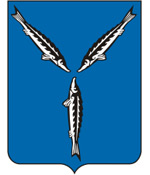
Saratov city map, Russia
Saratov city latest news and posts from our blog:.
4 April, 2019 / Cities of Russia at Night - the Views from Space .
21 November, 2011 / Picturesque landscapes of the Saratov region .
19 November, 2009 / Life of juvenile prisoners in Russia .
History of Saratov
Foundation of saratov.
People already lived on the site of today’s Saratov in ancient times. On the territory of the city there is Alekseevskoye settlement - an archaeological monument that has seven identified cultural horizons from the catacomb culture of the Middle Bronze Age (the 20th-19th centuries BC) to the settlements of the Golden Horde time (the 13th-14th centuries AD) with a temporary break in the 5th-13th centuries.
The settlements in this place regularly appeared during periods of relatively stable state structures (Khazar Khaganate, Volga Bulgaria, Golden Horde) and disappeared without a trace during the next wave of nomads. The last such cycle before the founding of Saratov ended in 1395-1396, during the invasion of Tamerlane (Timur), who destroyed the Golden Horde town of Uvek (Ukek) that stood here.
In the next 200 years, the sparse population of this region was represented by Nogai and then Kalmyk nomads, Cossacks and fishing artels of Russian monasteries. After the military campaigns of Russian troops against the Kazan Khanate in 1552 and the Astrakhan Khanate in 1556, the Tsardom of Russia gained control of vast territories of the Volga Region. Under Tsar Fyodor Ivanovich, it was decided to found several new fortified towns on the Volga River.
In the summer of 1586, the Samara fortress was founded, in the summer of 1589 - Tsaritsyn (Volgograd). In the summer of 1590, halfway between Samara and Tsaritsyn, the Saratov fortress was founded. The exact location of the original Saratov is unknown. In the winter of 1613-1614, the fortress burned down. In 1617, it was rebuilt on the left bank of the Volga, at the mouth of the Saratovka River.
In 1674, Saratov was moved to the right bank of the Volga, to the area of the present Muzeynaya Square. Thus, the city of Saratov was founded three times: in 1590, 1617, and 1674, and each time in a new place.
More Historical Facts…
Saratov in the 18th-19th centuries
In 1700, the population of Saratov was about 2,000 people. The sedentary agricultural population for a long time could not populate the territory of the region. Only those who were attracted by the free life of the Cossacks moved here.
The construction of the Tsaritsyn guard line and other measures taken by Peter I to strengthen security created conditions for the settlement of the right bank of the Volga. Its location at the intersection of the shortest land route to Moscow and the water route from the lower Volga and the Caspian made Saratov an important transit point and a major center for trade in fish and salt.
In 1763, foreigners were invited to settle in the Volga Region. In 1766, Saratov became the center of coordination of German colonists. In 1780, the town became the center of the Saratov Vicegerency. In 1796, it was renamed the Saratov Governorate.
In 1811, the population of the town was 26,700 people. The general plan of Saratov, approved in 1812, became the basis for the development of the town for more than a hundred years. The French invasion of Russia (1812) influenced the life of Saratov. In 1813, the French prisoners of war were exiled here and used for public works to level ravines, build dams, plant gardens. Later, a lot of them took Russian citizenship and stayed in Saratov. Some of them were invited as tutors and teachers to Russian families and educational institutions, others opened their workshops.
In 1828, the Saratov Tobacco Factory, one of the first in the Russian Empire, began production. In addition to it, the town had a rope, tannery, bell, brick, and a number of other factories. Cholera epidemics broke out in Saratov in 1830 and 1848. The epidemic of 1830, which lasted more than one month, claimed up to 10,000 people.
The further growth of crafts and trade stimulated the development of river shipping on the Volga, which became the main transport artery of the Russian Empire. In the 19th century, Saratov turned into a major river port. A very strong impetus for the development of the Saratov Governorate was the construction of the Tambov - Saratov railway in 1871. It connected Saratov with the country’s railway network.
In 1876, the first stationary circus in the Russian Empire was built in Saratov. In 1885, a public art museum was opened, which became a major event in the cultural life of the city. In the end of the 19th century, Saratov was one of the largest centers for the grain trade and flour-grinding industry in the country. It became a major intermediary in the trade of oil products, meat, fish, salt, and wool.
Saratov in the 20th century
In 1908, trams began to carry passengers in Saratov - one of the oldest tram systems in Russia. In 1912, the Saratov Conservatory was opened - the third in the country after Moscow and St. Petersburg. In 1914, its population was 235,300 people. Until the end of the 1920s, Saratov remained the largest of the cities of the Volga Region (larger than Kazan, Nizhny Novgorod, Samara, etc.) and was often unofficially called the “capital of the Volga region”. From 1928 to 1932, Saratov was the administrative center of Lower Volga Krai, since 1934 - Saratov Krai, since 1936 - Saratov Oblast.
The rapid development of the city took place during the Second World War, when a number of factories and military schools were evacuated here from the west of the USSR. Saratov was subjected to several German air raids, the main purpose of which was to destroy the bridge over the Volga and the oil refinery.
Before the war, the town of Pokrovsk (Engels) located just across the Volga River was the capital of the German autonomous region with a population of about 800,000 people. A lot of them (about 400,000) were exiled to Siberia and Kazakhstan during the war; some later came back. Since the 1980s, most of them have emigrated to Germany. Until now, the few surviving buildings in the pseudo-Gothic style remind of this page in the history of Saratov.
Yuri Gagarin, the first man in space, studied in Saratov. In 1955, he graduated with honors from the Saratov Industrial College. After his historic flight, Gagarin also landed about 35 km from Saratov - on the left bank of the Volga.
Saratov’s population peaked in 1987 - 918,000 people. Until 1992, Saratov was a closed city (foreigners were not allowed to visit it), since several large enterprises of the Soviet defense industry worked in the city, in particular, the Saratov Aviation Plant, which produced military and civil aircraft. Several industrial enterprises in Saratov also carried out orders for the Soviet space program.
Streets of Saratov
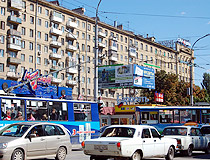
Street traffic in Saratov
Author: Kiyanovsky Dmitry
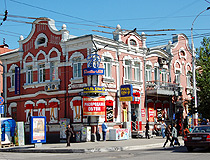
Picturesque old building in Saratov
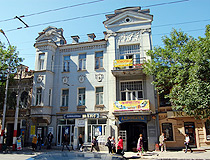
Architectural monument in Saratov
Saratov - Features
Saratov stretches for 34 km along the right bank of the Volgograd Reservoir (the Volga River) opposite the mouth of the Saratovka River and the city of Engels, which is located on the opposite bank. The distance from Saratov to Volgograd - 376 km, Samara - 425 km, Moscow - 847 km. The City Day of Saratov is celebrated on the second Sunday in September.
There are several hypotheses about the origin of the name of Saratov. One of the main versions is that Saratov got its name from Sokolovaya Mountain, which was called “sary tau” in Tatar meaning “yellow mountain”. There is an assumption that the name came from the words “sar atav” - “low-lying island” or “saryk atov” - “hawk island”. It is also possible that Saratov got its name from the Scythian-Iranian hydronym “Sarat”.
Three silver fish (sterlet) are depicted on the coat of arms of Saratov symbolizing “the great abundance of such fish in this area”. They form the Greek letter “upsilon” meaning “the choice of a worthy path at the crossroads of life’s roads”.
The climate in Saratov is moderately continental. This city is characterized by long (about four months), moderately cold winters and hot, often dry summers. The average temperature in January is minus 7.5 degrees Celsius, in July - plus 22.6 degrees Celsius. The best time to visit Saratov is from late May to early September.
Saratov is located at the intersection of main railway and highway lines, water routes. The international airport “Gagarin” offers regular flights to Yekaterinburg, Krasnodar, Moscow, Nizhny Novgorod, St. Petersburg, Sochi, Surgut, Ufa.
Trains to Moscow regularly depart from Saratov railway station, as well as passing trains to Adler, Astrakhan, Volgograd, Yekaterinburg, Kislovodsk, Kirov, Krasnoyarsk, Nizhnevartovsk, Nizhny Novgorod, Novokuznetsk, Novorossiysk, Perm, St. Petersburg, Simferopol, Tyumen, Chelyabinsk. The river port of Saratov serves only passengers of intercity cruise ships.
Saratov is a large industrial, cultural and educational center. Machine building, chemical and oil industries are well developed here. There are a lot of various attractions in Saratov: historical, architectural, religious and natural, various museums and beautiful parks. The city has a large number of architectural monuments of the late 19th - early 20th centuries.
Main Attractions of Saratov
Victory Park on Sokolovaya Mountain . This memorial complex was created in Saratov in 1975, when the 30th anniversary of the Victory in World War II was celebrated. This large park covers an area of 80 hectares. Here you can find the Eternal Flame, the Museum of Military and Labor Glory, the 40 meters high monument “Cranes”, and a unique exposition of military and civilian equipment with over 200 exhibits.
In 2003, the National Village of the Peoples of Saratov Oblast was opened in the park with real houses, yurts and other dwellings of the peoples of the region. In this place you can feel the atmosphere of the past not only of Russians, but also of Tatars, Armenians, Bashkirs, Georgians, and other peoples living in the Saratov region. In 2013, the Alley “Days of Russian Military Glory” was solemnly opened, on which monuments to prominent Russian commanders and statesmen were erected.
Victory Park is a favorite place for recreation for locals and visitors of the city. The top of Sokolovaya Mountain is one of the highest points in Saratov (165 meters). The observation deck located here offers a magnificent view of Saratov, the Volga River and its islands, the opposite bank, and the city of Engels (Saratov is connected with it by a bridge). Sokolovaya Street.
Cosmonauts Embankment - a street that stretches for 1.5 km along the Volga to the Saratov Bridge. The embankment received its present name in 1962 - after the first cosmonaut of our planet landed near Saratov. The monument to Yuri Gagarin was erected at the beginning of the embankment more than 30 years later. The embankment descends to the Volga in 4 wide terraces. In summer, there is a rental of bicycles, rollers, and gyro scooters.
In 2017, the floating light and music fountain “Heart of the Volga” was opened here. It is located right on the water, its multicolored jets rise to a height of 40 m. The fountain is open from May to October.
The embankment offers an excellent view of the Saratov Bridge (1965) - a reinforced concrete road bridge across the Volga River connecting Saratov with the city of Engels. The length of the bridge is over 2.8 km. It is one of the symbols of Saratov.
Kirov Avenue - a pedestrian street that stretches for 1 km through the historic center of Saratov. Unofficially, the street is called “Saratov Arbat”. Along the entire length of the street there are mansions and houses built in the late 19th - early 20th centuries. The most interesting ones are the neo-Gothic building of the Saratov Conservatory (1902) and the Volga Hotel (1917) built in the Art Nouveau style. The monument to the Saratov accordion, one of the symbols of Saratov, is installed here.
The walking area starts from Kirov Square, where one of the oldest stationary circuses in Russia is located - the Nikitin Brothers Circus. The fountain near the circus is a traditional meeting place. The building of the Covered Market (1916) located here is also worth mentioning.
Pictures of Saratov
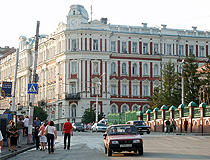
The building of the Volga railway administration in Saratov
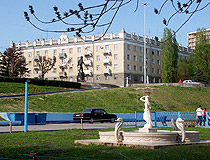
Summer in Saratov
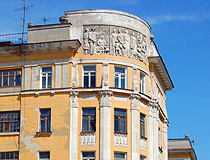
Saratov architecture
Church of the Icon of the Mother of God (1904-1906) - a very picturesque church, the main feature of which is that its multicolored domes resemble the Cathedral of St. Basil the Blessed standing on Red Square in Moscow. In Soviet times, the building served as a city planetarium. So it has been fairly well preserved. Volzhskaya Street, 36.
Cathedral of the Life-Giving Trinity (1689-1695) - the main Orthodox church in Saratov, a unique architectural monument for the Saratov region built in the Moscow baroque style. Moskovskaya Street, 6.
Saratov Regional Museum of Local Lore - the largest museum organization in Saratov Oblast. In total, the museum has about 400 thousand exhibits: archaeological, ethnographic, paleontological, entomological collections, examples of manuscript and early printed books, objects of religious worship, poster graphics, numismatics, materials on the history of the political, economic, and cultural life of Saratov.
Among the numerous exhibits on display in 30 spacious halls, it is worth highlighting the complete skeleton of an ichthyosaur, utensils belonging to the 4th century BC, a rare saber granted by Empress Elizabeth to the clerk Panteley Selivanov. In addition to the permanent exhibition, the museum organizes thematic exhibitions. Lermontova Street, 34.
The Radishchev Art Museum . Created in 1885, it became one of the first publicly accessible art museums in the Russian Empire. The ground floor displays medieval icons and a collection of Western European art, which is considered the third largest in Russia. These are canvases by Dutch, German, French, and Italian artists, furniture and porcelain, bronze and glass products.
On the second floor, you can see the works of Russian painters. Musical concerts and literary and art meetings are held in the Great Hall of this art museum. The library of the museum has a rich collection of manuscripts, old books. Radishchev Street, 39.
Museum of Samovars . This private museum, opened in 2015, houses the largest collection of samovars in Russia - over 700 pieces. Today, in a small room on the ground floor of a residential building, you can see samovars from all over the world and trace their evolution over several centuries. Over time, these ordinary kitchen utensils have turned into works of art and have become one of the symbols of Russia. Kutyakova Street, 34/36.
Gagarin’s Field (Gagarin’s Landing Site) . This attraction of Saratov is located outside the city. On April 12, 1961, the landing vehicle of the Vostok-1 spacecraft with Yuri Gagarin on board landed near the village of Smelovka in Saratov Oblast, several kilometers south of Saratov.
According to the pre-flight plan, the landing was to take place in the steppes of Kazakhstan, but due to a failure in the braking system, Vostok-1 landed on the field of the collective farm “Lenin’s Path”. Yuri Gagarin himself considered his landing near Saratov to be symbolic. In this city the first cosmonaut of the planet attended an industrial technical school.
Today, a memorial complex has been created on this field with a 27-meter obelisk in the form of a rocket taking off. It is a smaller copy of the Monument to the Conquerors of Space located near the Museum of Cosmonautics in Moscow. Near the obelisk, there is a monument to Yury Gagarin, a descent vehicle, and 12 steles with images of the first cosmonauts, Konstantin Tsiolkovsky, and Sergei Korolev. There is a small park around the complex.
Saratov city of Russia photos
Sights of saratov.
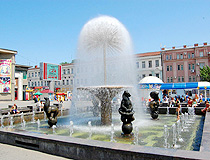
Dandelion fountain in the center of Saratov
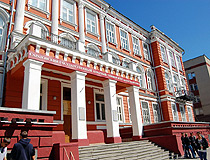
Saratov State Agrarian University
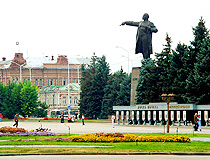
Lenin monument in Saratov
Churches of Saratov
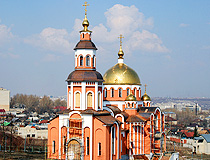
Holy Alexievsky Convent in Saratov
Author: Oleg Maraev
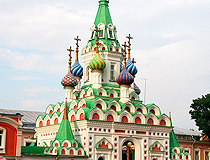
Church of the Icon of the Mother of God Soothe My Sorrows in Saratov
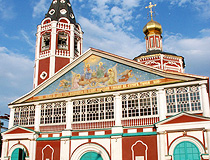
Cathedral of the Life-Giving Trinity in Saratov
The questions of our visitors
The comments of our visitors.
As an American visiting Saratov for the first time I was a little apprehensive, but I was pleasantly surprised with the friendliness of the people, so much so that I returned many times in recent years.
If you are interested in exploring Russia away from the usual Moscow or St Petersburg, you should consider Saratov with its location on the Volga River, interesting city center and landmarks. You will find the people will try and interact with you even if you don't speak Russian. Another wonderful adventure!
- Currently 3.04/5
Rating: 3.0 /5 (189 votes cast)
Things to Do in Saratov, Russia - Saratov Attractions
Things to do in saratov, explore popular experiences, top attractions in saratov.

Other Top Attractions around Saratov
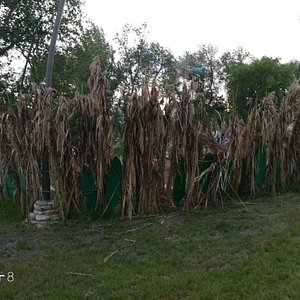
What travelers are saying

Industry Organizations
Airlines for America | www.airlines.org American Bus Association | www.buses.org American Gaming Association | www.americangaming.org American Hotel & Lodging Association | www.ahla.com American Sightseeing International | www.sightseeing.com American Society of Association Executives | www.asaecenter.org Association for Convention Marketing Executives | www.acmenet.org Association for Convention Operations Management | www.acomonline.org Association of Corporate Travel Executives | www.acte.org Association of Destination Management Executives | www.adme.org Center for Exhibition Industry Research | www.ceir.org Convention Industry Council | www.conventionindustry.org Council of Engineering & Scientific Society Executives | www.cesse.org Cruise Lines International Association | www.cruising.org Destination Marketing Association International | www.destinationmarketing.org Destination Marketing Association of the West | www.dmawest.org Exhibit Designers and Producers Association | www.edpa.com Financial & Insurance Conference Planners | www.ficpnet.com Global Business Travel Association | www.gbta.org Healthcare Convention and Exhibitors Association | www.hcea.org Hospitality Sales and Marketing Association International | www.hsmai.org International Association of Expositions & Events | www.iaee.com International Association of Conference Centers | www.iacconline.org International Association of Fairs & Expositions | www.iafenet.org International Association of Venue Managers | www.iavm.org International Congress & Convention Association | www.iccaworld.com International Festivals and Events Association | www.ifea.com International Trade Administration Office of Travel & Tourism Industries (OTTI) | www.tinet.ita.doc.gov Meetings Mean Business | www.meetingsmeanbusiness.com Meeting Professionals International | www.mpiweb.org National Association of Sports Commissions | www.sportscommissions.org National Coalition of Black Meeting Planners | www.ncbmp.com National Tour Association | www.ntaonline.com National Park Service | www.nps.gov North American Travel Journalists Association | www.natja.org Pacific Asia Travel Association | www.pata.org Professional Convention Management Association | www.pcma.org Recreation Vehicle Industry Association | www.rvamerica.net Religious Conference Management Association | www.rcmaweb.org Society of American Travel Writers | www.satw.org Society of Corporate Meeting Professionals | www.scmp.org Society of Government Meeting Professionals | www.sgmp.org Society of Incentive & Travel Executives | www.siteglobal.com Travel & Tourism Research Association | www.ttra.com United States Tour Operators Association | www.ustoa.com United States Travel Association | www.ustravel.org World Food Travel Association | www.worldfoodtravel.org World Travel & Tourism Council | www.wttc.org
Research Links
CBRE | www.cbre.us CIC Research | www.cicresearch.com Dean Runyan Associates | www.deanrunyan.com Destination Analysts | www.destinationanalysts.com Lauren Schlau Consulting | www.lsconsult.com Longwoods International | www.longwoods-intl.com MMGY Global | www.mmgyglobal.com MMGY NextFactor | https://nextfactorinc.com See Source | www.seesource.com STR | www.str.com Strategic Marketing Group | www.smgonline.net Tourism Economics | www.tourismeconomics.com Travel Industry Indicators | www.travelindicators.com
THE 15 BEST Things to Do in Saratov
Things to do in saratov, explore popular experiences, top attractions in saratov.

Other Top Attractions around Saratov

What travellers are saying

IMAGES
VIDEO
COMMENTS
Among these is the Digital Markets Act (DMA), which aims to regulate large tech platforms and tackle concerns around competition, consumer protection, and user privacy. The regulation impacts users in the European Union (EU) and European Economic Area (EEA), as well as businesses that collect data from users in these regions. For the travel ...
The hotel industry, accustomed to constant market challenges, now faces a new adversary: the Digital Markets Act (DMA). This legislation, aimed at bringing more transparency and fairness to the ...
The DMA (Digital Market Act) is counterproductive for individual hotels. When implemented, the DMA does the opposite of what was originally intended. ... Restoring Hospitality & Tourism Economic ...
From emerging to mature to strained, we transform destinations. We help industry leaders move beyond visitor-based economics to destination stewardship built on equitable, social, cultural, environmental, and economic exchanges. Founded on the belief that tourism should be transformational for residents well as travelers, we build authentic ...
It is to make tourism more sustainable and thus enjoyable for visitors for years to come. Hence, in a nutshell, DMOs engage in a variety of activities that will help promote and develop sustainable travel practices, including: Educating travelers about the destination's attractions and offerings;
Sacramnto-Stkton-Modesto. 866. Fresno-Visalia. 868. Chico-Redding. 881. Spokane. Learn how to target multiple locations at the same time. For more information on ad targeting, check out the audience targeting page.
Against this backdrop, now is the time for tourism stakeholders to combine their thinking and resources to look for better ways to handle the visitor flows of today—while properly preparing themselves for the visitor flows of tomorrow. We offer a diagnostic that destinations can use to spot early-warning signs about tourism concentration ...
Institute for Tourism and Recreation Research Publications Institute for Tourism and Recreation Research 8-8-2016 Using DMAs as a Marketing Tool: 2015 Nonresident Visitor Data ... DMA's, represent 27 percent of the vacationer market in Montana. Salt Lake ity and Los Angeles dropped out of the top five in 2015. Overall, visitors to Montana ...
This article discusses the concomitant processes of increasing familiarisation, responsiveness and. responsibility that digital technology enables in the realm of tourism. We reflect on the ...
Shift towards Leadership. In a strategic shift toward unity and cohesion, we propose a transformative rebranding from DMA West to "One West Tourism Alliance.". This evolution not only symbolizes a coming together of Western destinations, but emphasizes our shared identity, collective strength, and the boundless possibilities that lie within ...
on behalf of DMA West Education & Research Foundation education & research foundation Prepared for DMA West Education & Research Foundation by Destination Analysts, Inc. ... Interest in Tourism (5.3%) and Internship (2.6%). How Individuals Learned about the DMO Industry 632% 32.9% Hotel Work Recruiter/Job Center Friends/Family Work. Private Sector
Your story. Our story. The tourism industry is in the midst of a generational shift. Brought on by post-pandemic travel trends and re-prioritized demand, new accountability surrounds our work's positive and negative impact on communities. New thinking about how tourism intersects with critical issues like housing affordability, climate ...
The DMO Visitor Guide Readership & Conversion Studywas conducted for the DMA West Education & Research Foundation by Destination Analysts with support from Miles Partnership. In addition to the research, impact and influence of visitor guides, insights from this cooperative study of 12 DMOs cover who uses official DMO visitor guides and why ...
In terms of DMA perspective, El-Gohary (2012), El-Gohary and Eid (2012) and Abu-Shouk, Lim and Megicks (2016) designed or validated DMA adoption frameworks; Yiamjaya (2016) analysed tourism ...
DMA West forged new partnerships and elevated the DMA West brand. They re-prioritized objectives and made program offerings more relevant to membership, resulting in increased on-board expertise, more industry influence, and increased revenue. TEI can assist your strategic management approach with a rejuvenating retreat, encouraging open ...
Search the DMA West Member Directory Search Directory Resource Library Access the members-only Resource Library. Password Required. Search Library Job Board View the Current Job Openings View Job Board DMA West | 2261 Market Street #5415 | San Francisco, CA 94114 (916) 443-9012 | info@ ...
Saratov was founded in 1590 and soon became a popular stop between Europe and Asia. Located 858 kilometers southeast of Moscow, it was one of three lower Volga cities founded as forts to protect ...
dma.intourism.com
The Sedona Sustainable Tourism Plan responds to the challenges posed by high tourism numbers with actions ranging from environmental stewardship of Sedona's famous red rocks to reducing noise, traffic congestion and overcrowding at popular locations. The Plan is the result of 18 months of planning by thousands of residents, community groups ...
Saratov - Overview. Saratov is a large city located in the southeast of the European part of Russia, the administrative center of Saratov Oblast, a major cultural, economic, and educational center of the Volga Region. The population of Saratov is about 818,400 (2022), the area - 2,100 sq. km. The phone code - +7 8452, the postal codes - 410000 ...
2. Saratov State Museum of Military Glory. 266. Military Museums. By DanieleMIR. if you are interested in soviet war machines, this place is a must visit if you are in Saratov. Really enjoyable. 3. Saratov State Art Museum of A.N. Radishhev.
International Trade Administration Office of Travel & Tourism Industries (OTTI) | www.tinet.ita.doc.gov Meetings Mean Business | www.meetingsmeanbusiness.com Meeting Professionals International | www.mpiweb.org National Association of Sports Commissions | www.sportscommissions.org National Coalition of Black Meeting Planners | www.ncbmp.com
2. Saratov State Museum of Military Glory. 266. Military Museums. By DanieleMIR. if you are interested in soviet war machines, this place is a must visit if you are in Saratov. Really enjoyable. 3. Saratov State Art Museum of A.N. Radishhev.
The DMA and TGA results showed that the T d 5%, T d 10% heat loss temperature, and Tg decreased gradually as PDMS doping increased. The ultraviolet spectral test showed that as the PDMS content increased, the transmittance of PI film decreased first, and then increased. All of the PI films have high transparency because the sulfone and ...
Albuquerque Tourism Marketing District Established. In late March, the Albuquerque City Council voted unanimously to establish an Albuquerque Tourism Marketing District (ATMD) that will boost the amount of funding available to promote the city as a travel destination. By adding a 2% assessment to the guest check-out folio at approximately 150 ...